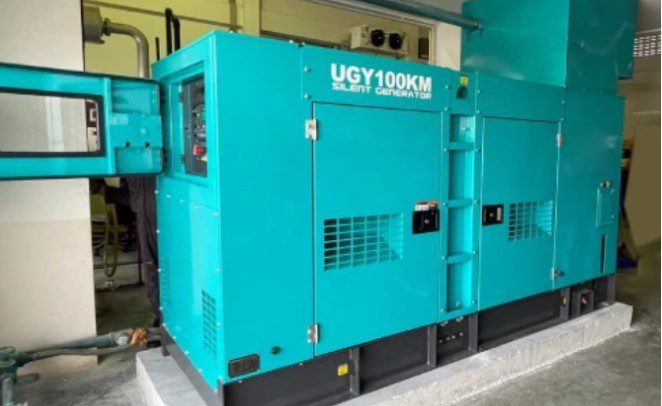As the world increasingly looks to supply sustainable, eco-friendly energy as a cornerstone of national aspirations, the hunt for alternatives to electricity has grown ever more urgent. Among these alternatives, the electromagnetic generator เครื่องปั่นไฟ stands out for its potential to bring forth significant clean, operational designs within a renewable energy framework. Unlike many popular methods of generating electricity without fossil fuels—solar panels, for instance—that require a good deal of sunlight to generate copious amounts of energy, electromagnetic generators can work in nearly any environment, using the abundant and freely accessible magnetic fields that exist all over the Earth. In what follows, we’ll take a look at what precisely an electromagnetic generator does, how it does it, and in what contexts it could hypothetically be put to use as a source of viable electricity.
Michael Faraday discovered electromagnetic induction in the 19th century.
This phenomenon involves magnetic fields and conductors; it’s about how, when a conductor (think: a moving coil of wire) passes through a magnetic field, an electric current is induced within the conductor. That current, that charge, is pulled into a workable form of electricity. Most generators that hum to life when fossil fuels are burned are simply not “clean.” Induction generators have no such interaction with Mother Nature and are a key player in our next “renewable” revolution.
Electromagnetic generators
Electromagnetic generators are increasingly in demand because they are environmentally friendly. Their lower maintenance costs are tied to the availability of parts that are not in short supply, making the generators’ upkeep cheaper than it might otherwise be. The generators themselves are inexpensive to operate because they produce no carbon dioxide or other greenhouse gasses. This makes them attractive to a wide range of people, from governments to individual citizens, looking to cut their carbon footprint.
Converting mechanical energy into electrical energy
Converting mechanical energy into electrical energy with high efficiency makes electromagnetic generators capable components. Compared to traditional power sources, which can waste energy in areas such as friction, fuel inefficiency, or thermal dynamics, these generators perform with fewer wasted resources and produce a stronger yield. With almost no moving parts, electromagnetic generators have also proven to be very dependable, leading to less wear and tear on the machines themselves. Consequently, they tend to have lower maintenance requirements and longer lifespans, making them a dependable choice for energy production.
Electromagnetic generators
Electromagnetic generators are also appealing because they are versatile. They can be scaled easily to meet energy demands, from the small-scale applications of parts in homes to the large-scale use of whole pieces in industries or communities. At the same time, being hybrid systems, they can be combined with wind and solar power and still supply energy when those other sources aren’t working well—making electromagnetic generators suitable for a range of energy needs across a range of potential applications.The electromagnetic generator system has a sizable capital cost, but it has a low decreasing operating cost, low maintenance requirements, and no needed fuel, which makes it a likely choice for long-term economy. If advancements in technology and an increase in production scale do bring further price decreases for the electromagnetic generator, it could become a more accessible option for consumers.
What remains feels like magic: generators provide electrical power.
Our need for domestic energy seems destined to grow, and the push for cleaner forms of energy makes good magic all the more necessary. Electromagnetic generators are not likely to play a huge role in what many of us imagine as the transition to a clean-energy future. In large part, that’s because we are supposed to imagine wind turbines and solar panels as the clean, carbon-free solutions to our energy demands. But electromagnetic generators could help meet those demands in a way that embraces a worldwide goal of eliminating power generation’s carbon footprint.
Electromagnetic generators can easily merge with existing electrical grids, and this feature could help boost them into the energy market.
They are well suited to power people living in the kind of off-grid, remote locations where an electrical infrastructure is absent. Today, fully one-seventh of the world’s population lives without access to electricity. Innovations in smart grid technology could enable these generators to overcome one of their biggest weaknesses: the ability to deliver more power when it is needed.
Electromagnetic generators have many benefits, but they have yet to achieve universal acceptance.
Their initial installation cost can be a barrier for small businesses and budget-limited communities. Moreover, potential users need to be educated about the technology and made aware of its advantages. Many users are more familiar with other renewable energy sources, such as solar and wind power. And unlike these sources, electromagnetic generators have yet to be featured in many high-profile installations. But as they start to make waves in more stories like that of Dorseyville, PA, perhaps these hurdles will begin to evaporate, and we will achieve the universal acceptance that electronic generators now enjoy, thanks to far fewer prescient electro dynamicists.
Electromagnetic generators are gaining increasing popularity as a sustainable renewable energy source (RES) ; they are seen as “green” and are effective and adaptable electricity providers; their future seems bright. As we move toward a future focused on sustainability, it’s hard to imagine a scenario in which they are not a central power supply for homes and businesses, and potentially even entire villages. Yet even in this virtually guaranteed scenario, what might the electromagnetic generator เครื่องปั่นไฟ REvolution bring to an environmentally “cleaner world”?
The recognition of these benefits is growing, and so is the deployment of electromagnetic generators. Their advance will keep pushing renewable electromechanical generation forward as an even more serious and credible contender in the global electricity marketplace.

